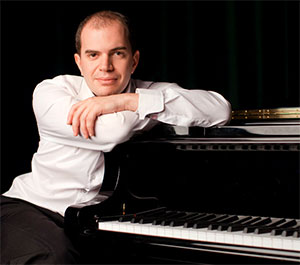by Daniel Hathaway

Conducting with his bare hands, Sinaisky, who is music director of Moscow’s Bolshoi Theatre, painted perfect little scenes for each of Anatoly Liadov’s Eight Russian Folk Songs to open the program. English horn and bassoon solos (Robert Walters and Barrick Stees) set a solemn mood for the “Religious Chant,” an affect that first assistant principal cellist Richard Weiss recaptured later in the “Plaintive Song.” “Dance of the Gnat” created a buzz both in the strings and an amused audience. Mary Kay Fink’s piccolo soared out over pizzicato strings in the “Round Dance,” and a vivacious orchestral tutti brought the set of tiny pieces to a celebratory ending in the “Village Dance Song.”

The leisurely-paced opening movement allowed Gerstein to linger on important notes and inspired a dreamy cadenza. A supple, tempo-bending approach served the slow movement well and contrasted beautifully with the quick, crystalline second section. Light, frisky and brilliant, the final movement gave soloist and orchestra an opportunity to shine both in big melodies and huge, bold flights of virtuosity. Gerstein received a warm ovation from the unusually large Thursday night audience, generously passing credit for the performance along to the orchestra. (Then the pianist changed out of his concert gear and modestly took a seat in the audience for the second half!)
Only Russian conductors seem to have wanted to take on Prokofiev’s third symphony with The Cleveland Orchestra (Kondrashin in 1976, Gergiev in 1994, Sinaisky in 2013). Largely composed of music repurposed from Prokofiev’s opera, The Fiery Angel, the 35-minute work remains operatic in its volatility and dramatic intensity despite the composer’s wish that it be regarded as “pure symphony.”
In any case, it’s a pure orchestral tour de force and not a little cinematic in its sweep and content, which explore the whole spectrum of color from dark to dazzling, and a range of emotional states from the tortured to the enchanted. Sonic events flash in and out like unconnected images in a dream. Here’s a wind chorale, then a martial intrusion by a snare drum. Strange, swooping violin gestures and frightening bass drum thuds must mean something, but we don’t know what the story line is.
Best just to sit back and marvel at the brilliant complexity of Prokofiev’s writing, from the insistent motives that penetrate the dark textures at the beginning to the intense nattering of the trumpets, nearly submerged in a rich orchestral soup, near the end. And marvel at the extraordinary ability of The Cleveland Orchestra to achieve clarity and transparency while playing music of such remarkable density.
Published on ClevelandClassical.com October 1, 2013
Click here for a printable version of this article.



